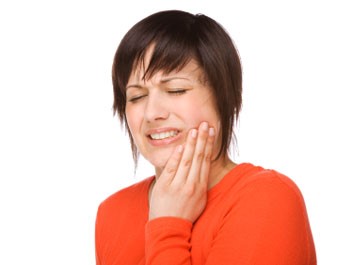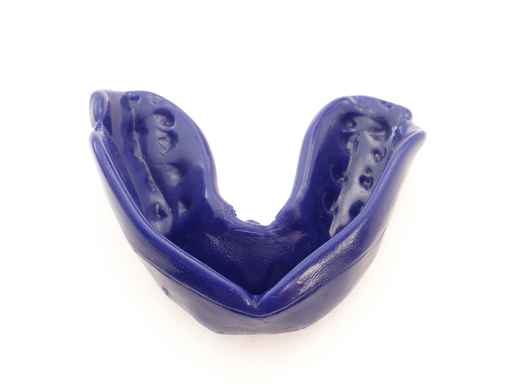
If plaque and tartar is left on the teeth, it provides the right conditions for bacteria to thrive. The bacteria irritate the gums, which means that they bleed more easily. You may notice this if you are brushing your teeth, or eating, and sometimes your gums may bleed a bit...

Everybody loves a bright white smile, and there are a variety of products and procedures available to help you improve the look of yours.
Many people are satisfied with the sparkle they get from brushing...

Teeth can be sensitive to a number of things including hot or cold, touch, or sweets. These can generally be grouped into a hypersensitive situation of the tooth root. When the gums recede the root is exposed and under certain conditions may...
Mouthguards



A properly fitted mouthguard can prevent a range of injuries.
It's widely recognized that mouthguards can prevent broken teeth in both children and adults. What many don't realize, however, is a mouthguard's effectiveness in preventing a host of sport-related mouth and facial injuries. The Canadian Dental Hygienists Association recommends mouthguards be used by players in practices and games in a range of contact and non-contact, competitive and non-competitive sports. They include, but are not limited to • ice hockey • field hockey • football • wrestling • boxing • martial arts • basketball • skiing • bicycling • soccer • softball • lacrosse • rugby • in-line skating • skateboarding
Do's:
• Do use a properly constructed mouthguard fabricated by a dental hygienist.
• Do consider a coloured mouthguard as it may be easier to find than a clear one on a playing field.
• Do rinse your mouthguard with cold water or with a mouthwash before and after each use. To properly clean it, use toothpaste and a toothbrush or clean it in cool, soapy water and rinse thoroughly.
• Do store and transport your mouthguard in a firm, perforated container to prevent damage and permit air circulation.
• Do remove retainers and other removable dental appliances such as orthodontic retainers, removable bridges, or dentures (complete or partial) before inserting your mouthguard.
• Do replace your mouthguard every two to three years under normal use. Earlier replacement is recommended if it becomes cracked, torn or split, or if the fit deteriorates, significant wear appears, or there is unsatisfactory retention. If your mouthguard absorbs a strong blow, it may need to be replaced immediately.
• Do bring your mouthguard to each dental hygiene visit to have it evaluated.
Don'ts:
• Don't chew on your mouthguard, use hot water to clean it, leave it in direct sunlight or alter the mouthguard in any way. This will affect the fit and may damage it or decrease its effectiveness.
• Don't share your mouthguard with others. • Don't close the mouthguard container until your freshly washed mouthguard is dry.
Take care of your Mouthguard and it will take care of you!

Although thorough brushing and flossing can remove food particles and plaque from smooth surfaces of teeth, they cannot always get into all the nooks and crannies of the back teeth to remove the food and plaque. Sealants protect these vulnerable areas from tooth decay by "sealing out" plaque and food...

Tooth decay is caused by acid-producing bacteria that collect around the teeth and gingivae (gums) in a sticky, clear film called "plaque." Without good daily oral hygiene and regular dental visits, teeth become more vulnerable to caries. Brushing twice a day and cleaning between...

Oral cancer screening (OCS) may be the best way to detect oral cancer early, and dental hygienists have an important role. They screen for oral cancer as part of every dental hygiene appointment, regardless of age, and educate clients about risk factors and how to detect potential problems.
